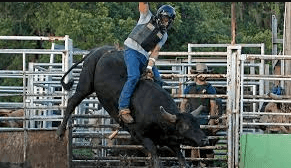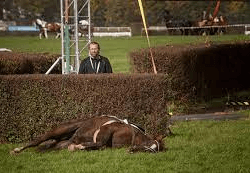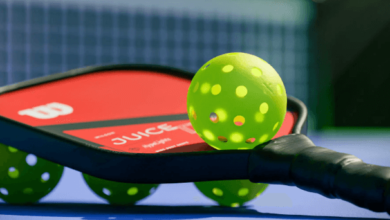How Can One Train For Bull Riding?

Bull riding, a sport rooted in the traditions of rodeo, requires a unique set of skills and physical conditioning. Aspiring bull riders must develop core strength and muscle conditioning to withstand the immense forces exerted by these powerful animals. Additionally, improving balance and stability is crucial for maintaining control while atop a bucking bull. Mental preparation and resilience are also essential aspects of training for bull riding, as riders must be able to overcome fear and maintain focus in high-pressure situations. This article will explore various strategies and techniques for training in each of these areas, providing aspiring bull riders with the knowledge they need to pursue this exhilarating sport.
Building core strength and muscle conditioning is paramount in preparing for bull riding. The dynamic movements required during a ride place intense strain on the rider’s body, particularly their abdominal and lower back muscles. Training exercises such as planks, crunches, squats, lunges, and deadlifts can help strengthen these key muscle groups. Moreover, incorporating resistance training using weights or resistance bands can further enhance muscular endurance and power necessary for staying balanced on a bucking bull’s back.
Improving balance and stability is another critical aspect of bull riding training. Riders must be able to maintain their position while the bull bucks wildly beneath them. Practicing exercises that challenge balance such as yoga poses or standing on unstable surfaces like Bosu balls can greatly improve stability. Furthermore, engaging in activities that enhance proprioception (the body’s awareness of its position) such as practicing barefoot or engaging in martial arts can also contribute to better balance control during rides.
In addition to physical preparation, mental fortitude plays a significant role in becoming an accomplished bull rider. The ability to stay focused amid chaos and overcome fear is essential for success in this challenging sport. Developing mental resilience can involve techniques such as visualization exercises where riders imagine themselves successfully completing rides or utilizing breathing techniques to remain calm under pressure. Additionally, seeking guidance from sports psychology professionals can provide riders with valuable tools to manage stress and enhance their mental preparedness.
By incorporating these strategies into their training regimen, aspiring bull riders can cultivate the physical and mental attributes necessary for a successful career in this thrilling sport.
Building Core Strength and Muscle Conditioning
Developing a robust core and enhancing muscle conditioning are essential components in preparing for the challenging sport of bull riding. Resistance training plays a vital role in building the necessary strength and stability required to stay on top of a bucking bull. This type of training involves using weights, resistance bands, or bodyweight exercises to target specific muscle groups such as the abdominals, lower back, and hips.
By incorporating exercises like planks, squats, deadlifts, and Russian twists into their workout routine, aspiring bull riders can strengthen their core muscles and improve their balance and coordination. Additionally, proper nutrition is crucial for optimal muscle development and overall performance. Consuming a well-balanced diet that includes lean proteins, complex carbohydrates, healthy fats, and an adequate amount of calories provides the necessary fuel for intense training sessions while promoting muscle growth and repair.
Adequate hydration is also essential to prevent fatigue during workouts. By combining resistance training with proper nutrition practices, individuals can effectively build core strength and enhance muscle conditioning to better prepare themselves for the physically demanding nature of bull riding.
Improving Balance and Stability
Enhancing equilibrium and steadiness in preparation for the exhilarating rodeo sport requires a harmonious fusion of bodily control akin to gracefully navigating a treacherous tightrope.
Bull riders must focus on improving coordination and enhancing flexibility to maintain balance and stability while astride the powerful animal.
Coordination plays a crucial role in bull riding as it allows riders to synchronize their movements with the unpredictable motions of the bull, enabling them to make split-second adjustments and maintain their position.
By honing their coordination skills through targeted exercises such as agility drills and balance training, riders can develop the ability to react swiftly and efficiently during rides.
Additionally, improving flexibility is essential for maintaining balance on top of a bucking bull. Flexible muscles enable riders to move fluidly with the bull’s movements, reducing strain on their bodies and minimizing the risk of falls or injuries.
Incorporating stretching routines that target major muscle groups used in bull riding, such as the legs, core, and upper body, helps increase range of motion and improve overall flexibility.
Through dedicated practice focused on enhancing coordination and flexibility, aspiring bull riders can develop the necessary skills to navigate the thrilling sport with poise and finesse.
Mental Preparation and Resilience
Mental fortitude and emotional resilience are paramount for athletes in the rodeo sport, as they must navigate the unforgiving challenges with unwavering focus and determination.
To prepare mentally for bull riding, visualization techniques and mindset training are essential. Athletes can use visualization to imagine themselves successfully riding a bull, visualizing every detail of the experience from start to finish. This helps them build confidence and familiarity with the event, enabling them to perform better when faced with real-life situations.
Additionally, overcoming fear and managing adrenaline surge are crucial aspects of mental preparation. Bull riding is an inherently dangerous sport that triggers intense fear responses and adrenaline rushes. Athletes must learn to channel these emotions effectively, using strategies such as deep breathing exercises or positive self-talk to stay calm under pressure.
By developing mental toughness and resilience, bull riders can enhance their performance and succeed in this thrilling yet challenging sport.
Frequently Asked Questions
What type of equipment is needed for bull riding training?
Bull riding training requires specific equipment to ensure safety. Essential gear includes a bull rope, a protective helmet, and a vest designed to absorb impact. These precautions are crucial in minimizing the risk of injury during bull riding training.
Are there any specific dietary recommendations for bull riders?
Dietary recommendations play a crucial role in bull riding training. Proper nutrition ensures optimal performance and aids in injury prevention. Consuming a balanced diet rich in protein, carbohydrates, and vitamins is essential for maintaining energy levels and promoting muscle recovery.
How long does it typically take to become proficient in bull riding?
The timeline for achieving proficiency in bull riding varies depending on an individual’s aptitude and dedication. However, with consistent training and effective exercises such as core strengthening and balance drills, riders can develop the necessary skills within a few years.
Are there any age restrictions or requirements for participating in bull riding?
Age restrictions for bull riding vary depending on the organization, but many have a minimum age requirement of 18. Safety precautions, such as wearing protective gear and receiving proper training, are essential for all participants to minimize the risk of injury.
What are some common injuries or risks associated with bull riding, and how can they be prevented or managed?
Injury prevention and risk management are crucial in bull riding. Common injuries include fractures, concussions, and spinal cord injuries. Protective gear such as helmets and vests can help mitigate risks, while proper training techniques and safety protocols should be followed to minimize injury occurrence.
Conclusion
In conclusion, the art of training for bull riding requires a steadfast commitment to building core strength and muscle conditioning.
By engaging in exercises that target the abdominal muscles, lower back, and legs, riders can develop the necessary power and endurance to withstand the intense forces exerted by these mighty creatures.
Additionally, improving balance and stability is crucial in order to maintain control while atop a bucking bull.
Furthermore, mental preparation and resilience play a paramount role in this demanding sport. Riders must cultivate a strong mindset that allows them to conquer fear and stay focused amidst the chaotic arena.
Developing techniques such as visualization and positive self-talk can be instrumental in bolstering confidence before taking on those fierce bulls.
In summary, mastering the art of bull riding necessitates unwavering dedication to physical fitness as well as mental fortitude. It is an endeavor that demands continuous training, perseverance, and bravery.
So saddle up with determination, embrace the challenge with unwavering resolve, and remember – when you’re facing off against a massive beast determined to throw you off its back – there’s no room for doubt or hesitation!





